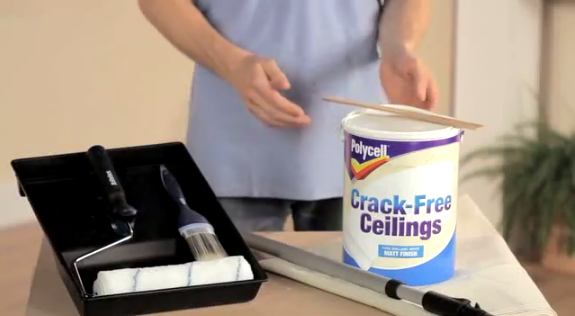Best Way To Fix Ceiling Cracks

Popcorn ceilings were all the rage back in the '60s and '70s. Cool Mouse Pointers For Free No Download. Applying the texture to drywall and plaster ceilings was a quick and easy way to hide imperfections and. If you have a broken LCD LED TV Screen that has any type of damage such as lines running vertically, spots or patches, cracks or breaks, this page will give you tips. People are so often caught up with painting walls and decorating their house in different fashions, that ceilings are frequently.
Foundation Cracks . Up until this time, the foundation was perfect.
We have obtained three bids to repair the damage. The price range is somewhat close but each suggested different repair methods. What is the best way to repair a cracked foundation? What can be done to minimize foundation cracks?
Get your weekly DIY fix with our customized newsletter. You've been added to our list. Good stuff is on its way! Regarding your example to fix cracks in drywall using the “3M patch plus primer” product after first applying fiberglass mesh drywall tape, may I assume your. We bought a new construction house in March 2012. Recently we have noticed that there are several cracks in the stem wall and the foundation in the garage.
Pam Martin, Bozeman, MTDEAR PAM: Fixing foundation cracks is an enormous business. There are many different and specialized solutions for the different types of foundation cracks and problems. Unfortunately, there is no one- size- fits- all solution with respect to this subject. Choosing a repair method that will almost always work often requires the advice of an independent third party. Instead of making three phone calls to contractors, I would have first called a structural engineer that specializes in residential problems. A seasoned engineer's advice is necessary for several reasons. The actual cause of the foundation failure needs to be identified correctly so that the proper solution is employed.
A salesperson from a repair company may just want to sell his product or service even though it may not be the best repair method. Perhaps more importantly, structural repairs that are not engineered properly can actually create stress points on the foundation.
These new stress points can sometimes cause secondary structural problems within the foundation at a later date. Introducing an engineer into the mix creates an additional advantage. Typically, they will develop a one or two page report that contains a drawing or plan. The contractor that is eventually hired must follow this plan to insure that the foundation is repaired properly. In many states, engineers must pass a rigid professional certification test.
This testing process helps to insure that the advice they offer is accurate and will work. You do not always get this same assurance from a repair company salesperson or contractor. Be sure to ask the structural engineer about soil problems.
The fact that your crack just happened after 2. Many parts of the nation experience moderate to severe droughts from time to time. The loss of water from the soil can cause it to shrink in volume. If the soil shrinkage does not happen at the same rate under the entire foundation, one corner or section may fall farther or quicker than other parts. This creates tension within the foundation. The tension force typically expresses itself as the actual crack.
Depending upon the soil makeup at your house, part of the foundation fix may require that water be injected deep into the soil at different places around the foundation. This added water can often cause the soil to lift the house back up to where it was originally. Foundation cracks can close up significantly just with the addition of this water. Water can be added in any number of ways. I have found that a powered fence post auger is a wonderful tool that allows you to drill a six- inch diameter hole 4 or 5 feet into the ground. Space these holes about six feet apart around your foundation.
The hole can be filled with rounded gravel too within one inch of the surface. Regular rainwater or water provided by a sprinkler or soaker hose finds the gravel quickly.
This water flows readily through the gravel and drops deep into the soil that lies near the bottom of the foundation. Once the soil soaks up the water, it often swells back up.
To stop this back and forth motion of the soil, try to keep it slightly moist all of the time. By doing this, you can keep the foundation in a constant state of dynamic equilibrium. If the engineer is in agreement that your soil may be one that does shrink and swell in response to moisture changes, you may want to pursue this water injection method for several months before you begin to employ any other fix to the foundation. Many foundation problems can be avoided with the addition of extra steel to the concrete footers and actual foundation. The building code requirements for structural steel are minimum requirements. You can increase the size of steel and the number of pieces of steel for very little extra cost in most cases.
Once again, a small consulting fee paid to a residential structural engineer during the planning phase can pay huge dividends down the road. Imagine spending less than a thousand dollars up front for a simple consult and extra steel instead of paying many thousands of dollars to repair a weak foundation at a later date.